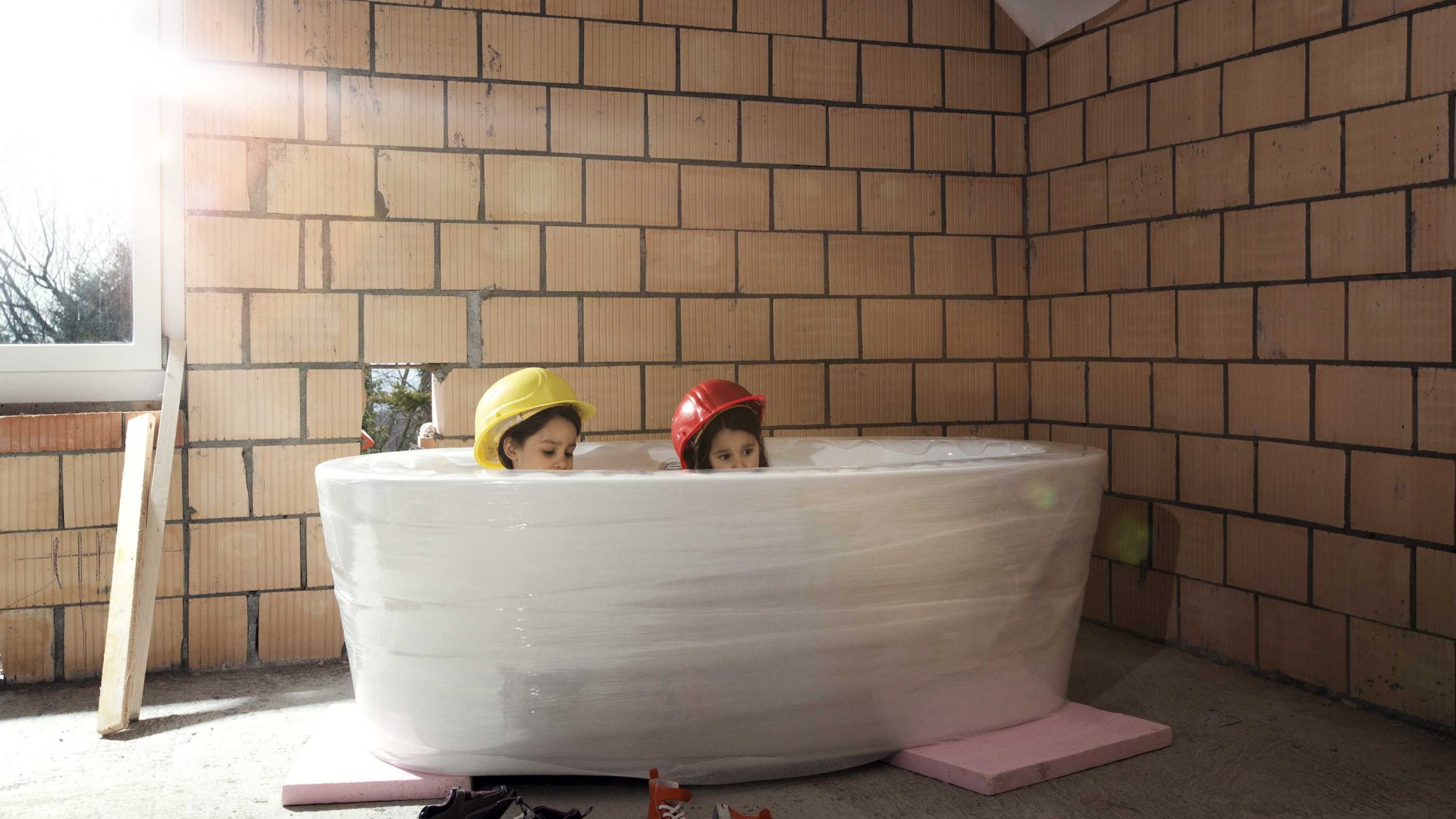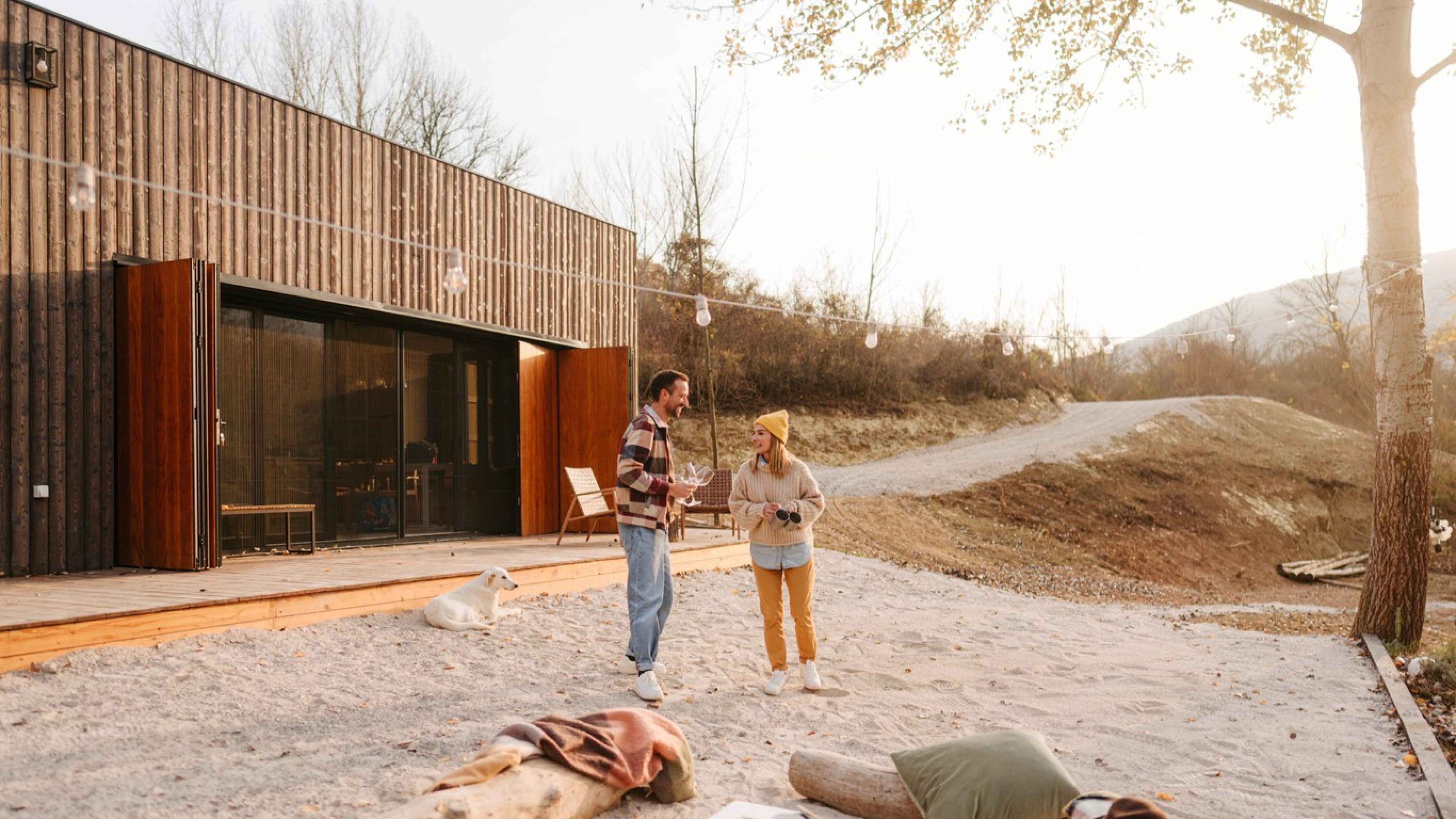Sustainability and environmental protection are more crucial than ever. Learn about sustainable building, sustainability standards and better mortgage rates for a sustainable home.


Sustainable building
Sustainable building minimises energy and resource consumption, reduces land use and prevents the pollution of nature throughout the entire life cycle of the building. It depends on the choice of plot, the architecture, the energy, water and material efficiency and resource-efficient operation, including waste prevention.
Grey energy
An important factor is the consumption of building materials. Each building material has what is known as “grey energy”. This refers to the entire energy required for the extraction of materials, for the production, processing, transport and installation of components and for the disposal of building materials.
This grey energy can be converted to the area and lifespan of a building and then compared with the operating energy. Even in a new low-energy building, the grey energy for every square metre of usable area amounts to 40 to 50 kilowatt hours per year – more than is used for heating and hot water. You should therefore check which building materials you are using for your house construction and pay attention to good quality.
Recycling of construction waste
A conscious choice of building materials is crucial for sustainability. What happens to them after demolition or dismantling also has an impact on the environment. "The aim must be to make the best possible use of construction waste in order to conserve resources and landfill space."
The design of the components plays an important role in achieving a higher recycling rate. For instance, polystyrene panels insulate excellently. However, they are often glued to a substrate and are thus difficult to dispose of separately. Plugging or screwing is therefore more sustainable than gluing. Flexible construction techniques also make it easier to alter and replace individual components. This allows building materials to be reused in several cycles, which extends the life of the building materials and reduces the environmental impact.
Minergie standards
Minergie is a Swiss building standard created in 1998 that applies to new and modernised buildings. The protected “Minergie” brand is borne jointly by the economy, the cantons and the federal government.
The Minergie standard focuses on comfort, efficiency and value preservation. A building that has been refurbished in accordance with Minergie standards generally consumes three to five times less energy than before. The requirements include the overall energy balance, final energy demand, self-generated electricity production, controlled air renewal, summer thermal insulation, exclusion of fossil fuels, airtightness concept, energy monitoring and structural measures for e-mobility compatibility.
Minergie-P certifies ultra-low-energy buildings which are particularly distinguished by their outstanding building shell and the associated comfort.
Minergie A buildings produce more energy than they consume, thus combining living comfort with maximum energy independence.
Minergie Eco is a cooperation project between the Minergie associations and ecobau. Minergie-ECO supplements the three Minergie building standards with the themes of health and construction ecology.
Cantonal building energy certificate (CECB)
If the energy quality of the building shell and the overall energy efficiency of your home reach a certain level, you can benefit from a large number of advantages with a building energy certificate issued by the cantons (CECB certificate). The CECB certificate shows the energy class of the building shell and building technology in seven classes (A–G).
Sustainability criteria
The Sustainable Construction Network Switzerland (NNBS) assesses sustainable building on the basis of 44 criteria. Resource availability, grey energy, construction methods and usability, urban planning issues, accessibility, regional value chains, flora and fauna, the mobility concept and social issues play a role here.
This broad consideration is the only way to assess the sustainability of a building. Individual criteria may compete with and even contradict each other. A thick building shell, for example, requires a greater use of materials and increases the proportion of grey energy. On the other hand, the building is better insulated and its lifespan may be longer. This shows the complexity of the matter, which is why the expertise of specialists is indispensable.
Better interest rates thanks to Swiss Life’s green mortgage
If you build or modernise your home sustainably and meet Swiss Life’s criteria for sustainability, you can take out a green mortgage. This allows you to benefit from preferential conditions. To qualify, you need a Minergie certificate, a corresponding cantonal building energy certificate (CECB) or certification according to the Geneva THPE standard (très haute performance énergétique). Buildings without an energy certificate or with insufficient CECB certification also qualify for the green mortgage as long as energy-related measures are planned and implemented.






